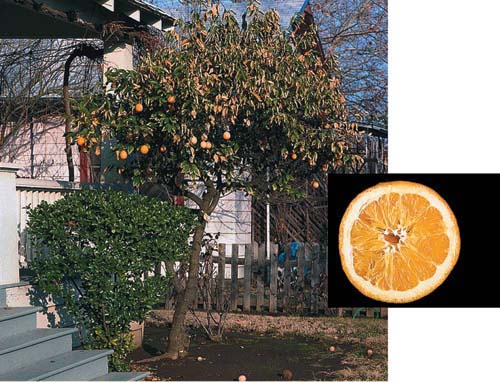All Issues
Frost-damaged plants may need pruning, but wait until spring
Publication Information
California Agriculture 61(2):55-55.
Published April 01, 2007
PDF | Citation | Permissions
Full text
Freezing temperatures in many parts of California injured some citrus trees and other frost-sensitive subtropical plants in January, but since the full extent of injury can not be known for several months, UC Cooperative Extension (UCCE) horticulture advisor Ed Perry recommends that gardeners wait until spring before pruning and removing damaged trees and plants.
“While you may be tempted to prune out damaged branches right away, it's best to wait until spring when new growth will show you the extent of the injury,” says Perry of Stanislaus County. “Earlier pruning often results in leaving some limbs which might continue to die back, and the removal of limbs which might recover.”
Frost injury to plants depends upon a number of factors, including species, age, health, soil moisture and location. Frost injures plants by causing ice crystals to form in plant cells, making water unavailable to plant tissues and disrupting the movement of fluids. Frost-damaged leaves appear water-soaked, wither, and turn dark brown or black. Unprotected, sensitive young trees may be killed, but frost rarely kills mature trees in California.
The only treatments that should be applied rapidly after a freeze are whitewashing to prevent “sunburn” and picking frost-damaged fruit to remove stress from the tree, says UCCE citrus farm advisor Ben Faber of Ventura County.
The UC advisors also recommend withholding nitrogen fertilizer applications to severely damaged citrus trees and irrigating carefully. Over-irrigation may induce root damage and encourage the growth of root-rotting organisms. Irrigation should be less frequent and in smaller amounts until trees have regained their normal foliage.





